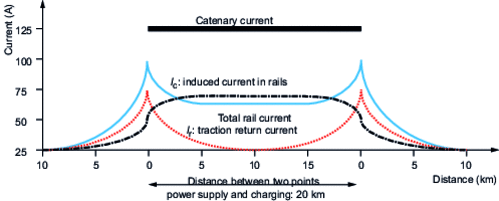7. Special case: the trolleybus
Although a road vehicle, the "trolleybus" used for urban transport in many of the world's major cities uses an electrical power supply similar to that used in our study. Insulated from the road surface by its pneumatic wheels, the power supply is provided by two overhead contact wires, which are contacted by two contact wipers carried by articulated roof-mounted poles known as trolleys (figure 30 ).
The two contact wires have the same cross-section as that of a railway catenary, and the two trolleys are fitted with articulated U-shaped rubbers to enable them to rotate (figure 31 a ).

Exclusive to subscribers. 97% yet to be discovered!
You do not have access to this resource.
Click here to request your free trial access!
Already subscribed? Log in!

The Ultimate Scientific and Technical Reference
This article is included in
Railway systems
This offer includes:
Knowledge Base
Updated and enriched with articles validated by our scientific committees
Services
A set of exclusive tools to complement the resources
Practical Path
Operational and didactic, to guarantee the acquisition of transversal skills
Doc & Quiz
Interactive articles with quizzes, for constructive reading
Special case: the trolleybus
Bibliography
Directory
Manufacturers – Suppliers – Distributors (non-exhaustive list)
Alstom Transport http://www.alstom.fr
Bombardier Transportation http://www.bombardier.com/fr/transport
Standards and norms
- Spécification technique concernant la fourniture de fils rainurés pour lignes de contact - UIC 870 - 01-56
- Railway applications – Traction network supply voltages - NF EN 50163/A1 - 10-07
- Railway applications – Rolling stock – Pantographs: characteristics and tests – Part 2: Pantographs for metros and streetcars - NF EN 50206-2 - 03-11
Exclusive to subscribers. 97% yet to be discovered!
You do not have access to this resource.
Click here to request your free trial access!
Already subscribed? Log in!

The Ultimate Scientific and Technical Reference